Yesterday I tried my hand at mending for the first time. I’m working on repairing a friend’s sweater, specifically -
mending a hole in one elbow & reinforcing the other elbow
mending two small holes on the front
As mentioned last week, I’m excited to explore mending - I consider it another technique for ‘remaking’ old & damaged sweaters and I’ll be glad to have it in my toolkit.
I started my mending journey around 3pm, thinking I’d be done in just a couple of hours. I had to call it off at 8pm, only halfway done with the first elbow, because it had gotten too dark in my apartment to bother continuing. Ugh. But! I learned a lot?
I started with ‘scotch darning’, because it looked particularly sturdy & well suited for the elbow (a high stress area of the sweater).
On my first attempt (top left) I realized that it was quite hard to see the knit stitch columns, and I could tell I wasn’t consistently sewing into same column on every row. Things were starting to look messy.
Then I came up with a clever idea and stitched some bright white thread in to better mark the columns - this helped a lot, and I was happy with the perfectly even width of the rows after trying this trick.
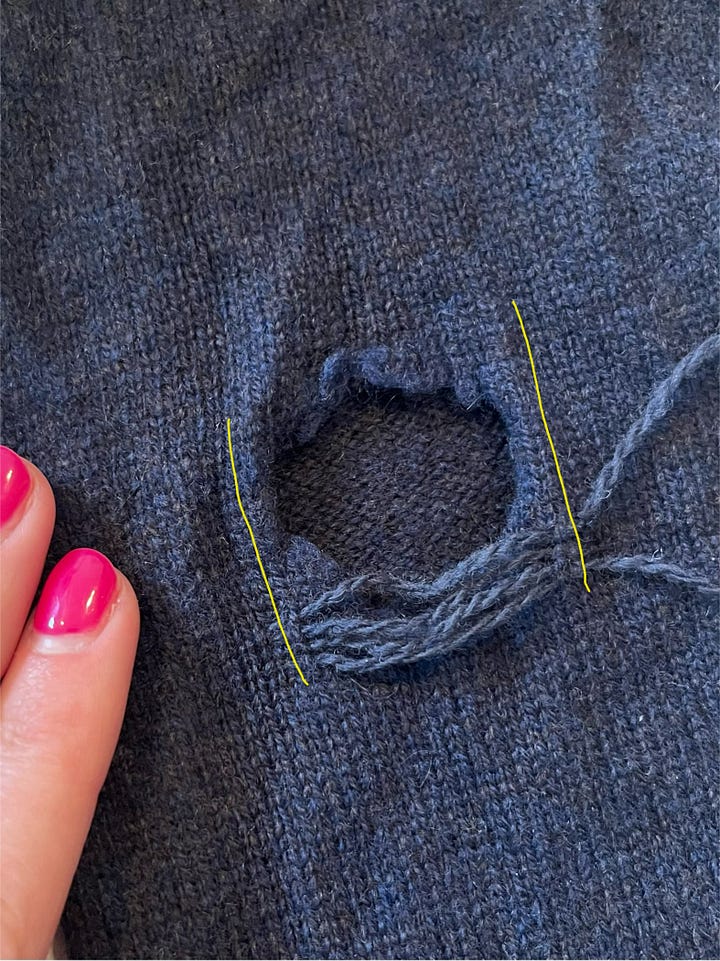
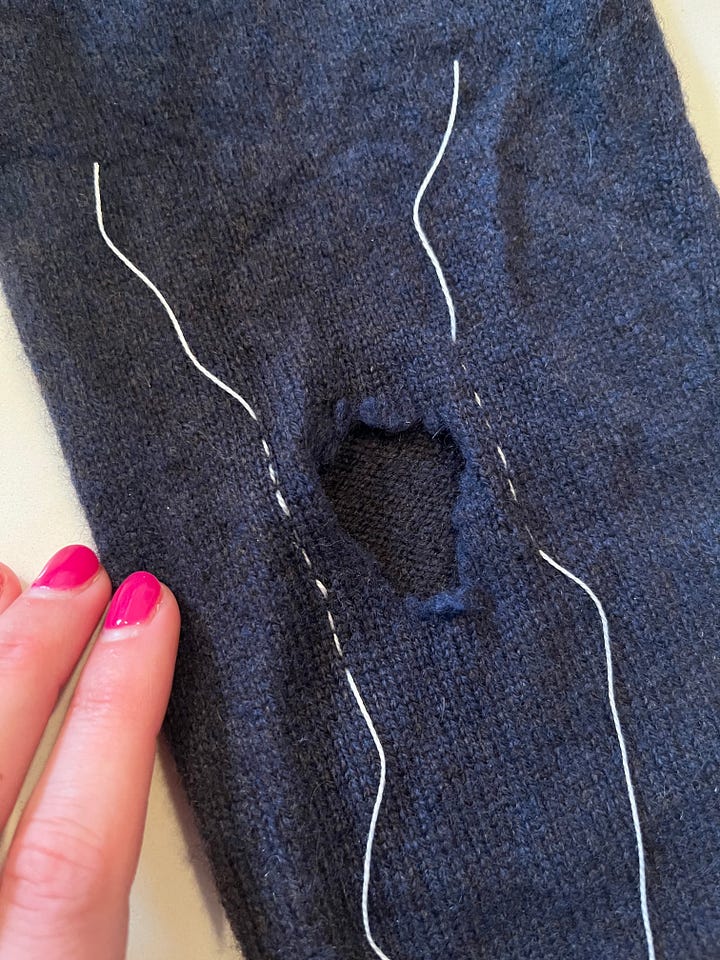
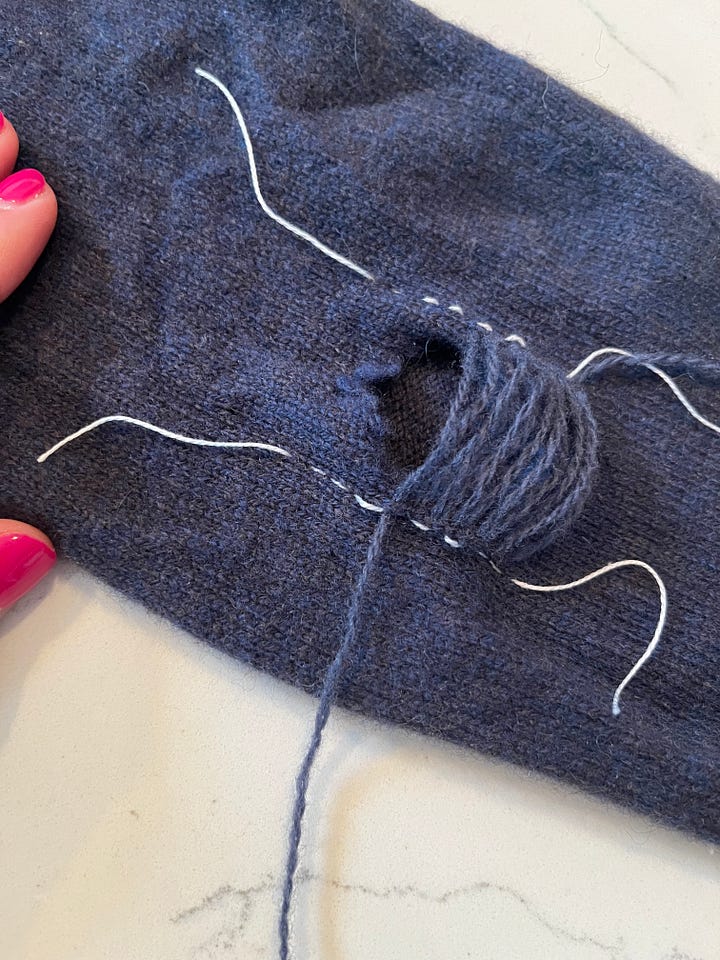
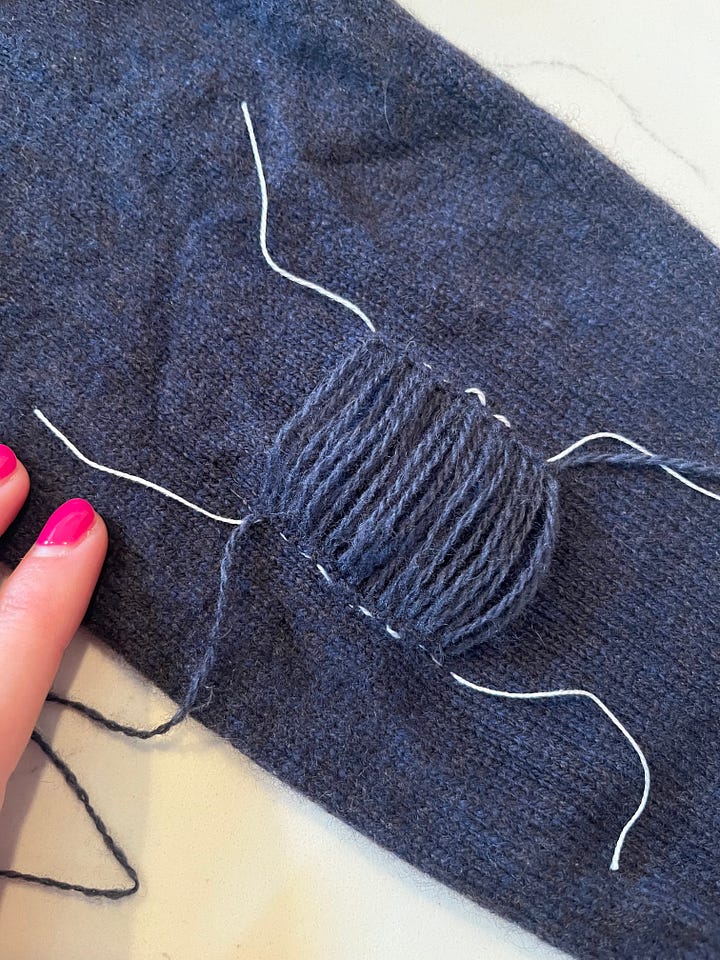
Things really started to go wrong when I started the first row of ‘blanket stitch’. The picture below was taken after completing that first row, and it’s pretty hard to see what’s going on here, which is basically the TL;DR of this entire post…
A few (mostly obvious) insights:
Dark yarn is hard to see! Small stitches are hard to see!
The overhead light in my apartment wasn’t good enough for this exercise! Especially at 8pm. Pro tip - placing an iPhone on top of a coffee mug and shining the flashlight down onto your work might be a sort-of passable alternative to a lamp?
The book uses contrasting color threads for this technique - this seems absolutely critical, considering the stitches are supposed to be perfectly aligned with the row below - I couldn’t even see individual stitches at this point, but I could tell that whatever I had done so far was uneven. There was no way that I’d be able to align the stitches in the next row.
So after all of that work, I painstakingly removed the blanket stitches. I’m going to give it another go this weekend with a few adjustments:
Ditching the ‘scotch darning’ technique and try a different mending method that’s more manageable with the dark yarn
Working in the morning when I have the best daylight. Also going to research / look into buying some sort of crafting lamp light (with a magnifying glass)
At the very least my ‘fail’ generated some good content for this week’s newsletter. Thanks for following along!
Best,
Anne

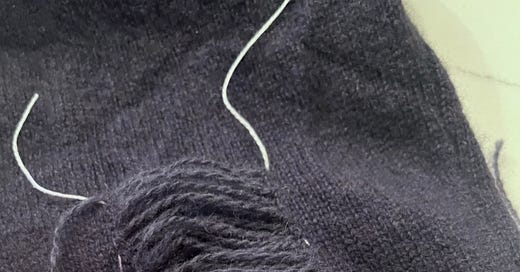




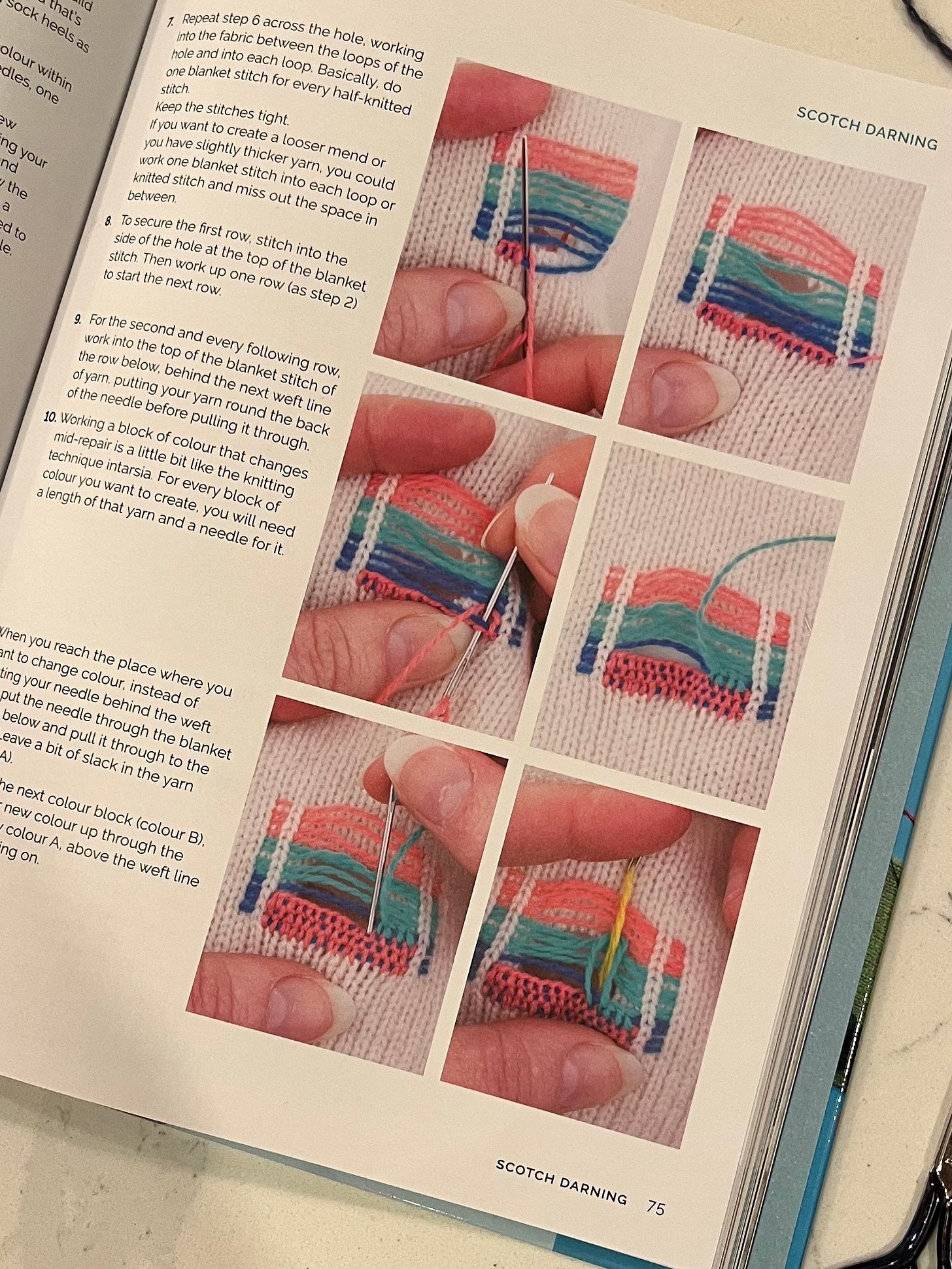

That looks like a great reference book. Are you willing to share the title and author. I especially like the many illustrations. I am beginning my journey on mending and caring for knits and can use all the help I can get!
I'm tackling my mending stack in May and I anticipate some learning moments like this one! How kind of you to mend your friend's sweater!